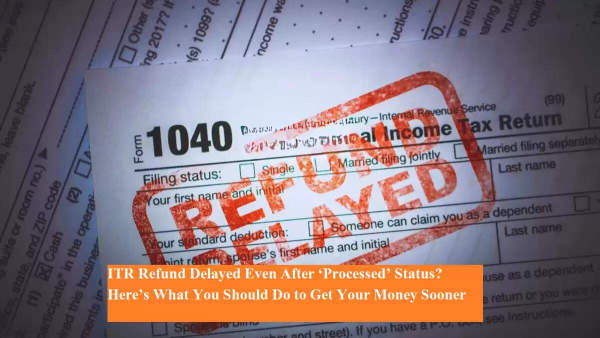
ITR Refund Delay Explained: Processed But Not Credited – Step-by-Step Solution for Taxpayers
The last date to file Income Tax Returns (ITR) for Assessment Year 2025–26 was September 16, and millions of taxpayers have already submitted their returns. However, a growing number of people are now facing a common problem — their ITR status on the income tax portal shows “Processed,” but the refund amount has still not been credited to their bank account. If you’re one of them, don’t panic. Here’s a detailed explanation of why this happens and what steps you can take to ensure your refund reaches you.
How Many Returns Have Been Processed So Far
According to data from the Income Tax Department, as of September 16, a total of 7.53 crore ITRs had been filed, and around 4 crore of these were already processed. In the following days, another 15 lakh returns were submitted, bringing the total to 7.68 crore filed and 6.11 crore processed.
Despite this, several taxpayers have taken to social media to express frustration, saying that while their return status shows “Processed,” the refund has not yet reached their bank accounts. Let’s understand the reasons behind this delay and how you can fix it.
Step 1: Check Refund/Demand Status on the e-Filing Portal
If your ITR status says “Processed” but no refund has arrived, log in to the Income Tax e-Filing portal and navigate to the “Refund/Demand Status” section. This page shows whether your refund has been issued or is pending.
If it shows that the refund has been processed but not credited, the issue could be related to incorrect bank details or IFSC code. Verify that your registered bank account is pre-validated and linked with your PAN, as these are mandatory for receiving refunds.
Step 2: Verify Bank Account and IFSC Details
Incorrect account numbers or outdated IFSC codes are the most common reasons for refund delays. Ensure that:
-
Your bank account number and IFSC code on the e-filing portal are accurate.
-
Your bank account is active and pre-validated.
-
Your bank supports Electronic Clearance Service (ECS) for direct credit of refunds.
If any of these details are incorrect, update them immediately on the portal. After that, you can request a refund reissue through the “Services → Refund Reissue” option.
Step 3: Check Form 26AS and TDS Details
Sometimes, mismatches between TDS (Tax Deducted at Source) data and your declared income can delay refunds. To ensure there are no discrepancies:
-
Download and review Form 26AS from the TRACES website.
-
Compare the tax deducted and deposited with the details mentioned in your ITR.
-
If you notice any mismatch, contact your employer, deductor, or financial institution to correct it before requesting reissue.
Step 4: Contact the Bank or NSDL
If the refund has been successfully processed and a Refund Reference Number (RRN) or RFD code has been generated but the amount still hasn’t reached your account, reach out to:
-
Your bank branch, or
-
NSDL (now Protean eGov Technologies Ltd), which handles refund processing.
In most cases, once the refund is processed, it takes about 15–30 days for the amount to be credited to your bank account.
Step 5: How Refunds Are Processed for Non-Audit Taxpayers
For individuals filing non-audit ITRs (like salaried employees or small investors), the process is simpler. Once you submit and verify your return, it is processed automatically by the department’s central system. If everything is accurate — from bank details to TDS records — your refund is usually credited within a few weeks.
However, if there are discrepancies, verification delays, or invalid bank details, the refund may be held up until the issue is resolved.
Tips to Avoid Future Refund Delays
To ensure a smooth and timely refund process:
-
Always enter accurate bank and IFSC details while filing your return.
-
Regularly check your refund status on the e-filing portal.
-
Keep your TDS records updated and verify Form 26AS before filing.
-
Avoid last-minute filing to reduce technical glitches or verification errors.
Bottom Line
A “Processed” status without refund credit is a common issue that often arises due to minor errors in bank details or mismatched tax data. By reviewing your refund status, ensuring correct bank information, and using the reissue option if necessary, you can get your refund without unnecessary delays. Staying vigilant and regularly checking your ITR details on the e-filing portal will help you receive your refund faster and without hassle.
-
Drink hot hill spice tea during the evening to improve immunity! Cold- Relax from coughing

-
Sugar and fiber essential for health – know the right way to include it in the diet

-
Karwa Chauth 2025: Best gifts to impress your mother-in-law

-
Do not avoid forgetting the remaining night stale bread, the body gets effective benefits

-
Moto G06 Power: Moto smartphone has played the market! You will get 50MP camera and strong features only at Rs 7,499
